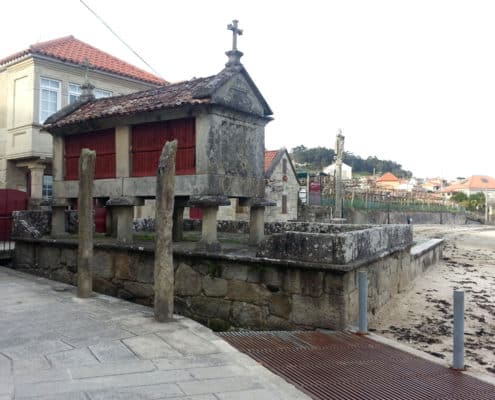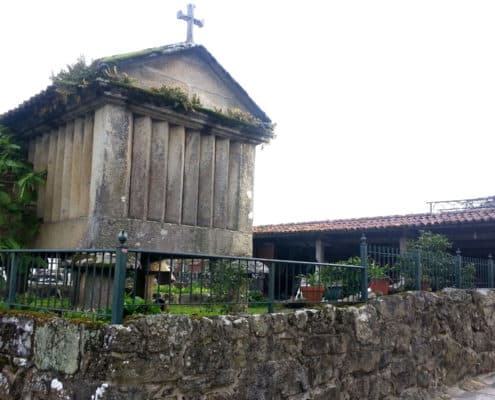This beautiful town is just six kilometers from the city of Pontevedra, in the municipality of Poio.
The historic center of Combarro was declared an Asset of Cultural Interest as a Historic Site and as a Historic Site and is a representative example of three elements of traditional Galician architecture, such as granaries, stone crosses and houses sailors.
Combarro’s cruceiros are generally located at street intersections or in squares, and present a particularity: the figure of the Virgin generally looks towards the sea, while the figure of Christ it is oriented inward.
The picturesque seaside houses have narrow porticoes and stone or wooden balconies.
To see the emblematic hórreos you have to go to the seafront promenade, there you can see about thirty of the 60 that exist in Combarro; These ancient stone or wood constructions, supported by pillars, were used to store grains and different foodstuffs. Most of them date from the 18th and 19th century.
It is also worth visiting the San Roque Square where you can discover the library building, original from the 18th century, and also two beautiful stone crosses.
Highly recommended visiting the old fishing port, which can be reached by walking through the streets or crossing Padrón beach at low tide.
To enjoy Combarro and its fiestas nothing better than visiting it on July 16; this day celebrates the Virgen del Carmen, a traditional festival of maritime cities. Every July 16 the boats are decorated with flowers and flags, giving rise to a procession by the sea; the most striking boat will be chosen to carry the image of the Virgin.
Another very popular event is the Festa do mexilón or Mussel Festival, which is held in August.
For all tastes and all ages, Combarro is an example of these singular places in Galician geography, where the blue sea and the green of the landscape color the environment. Seaside towns are like that. And Combarro is one of the most beautiful!




